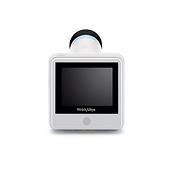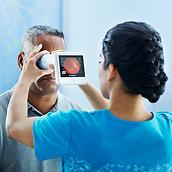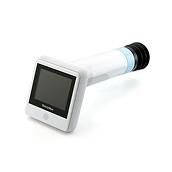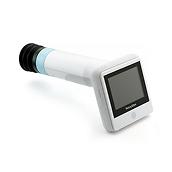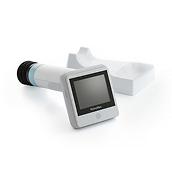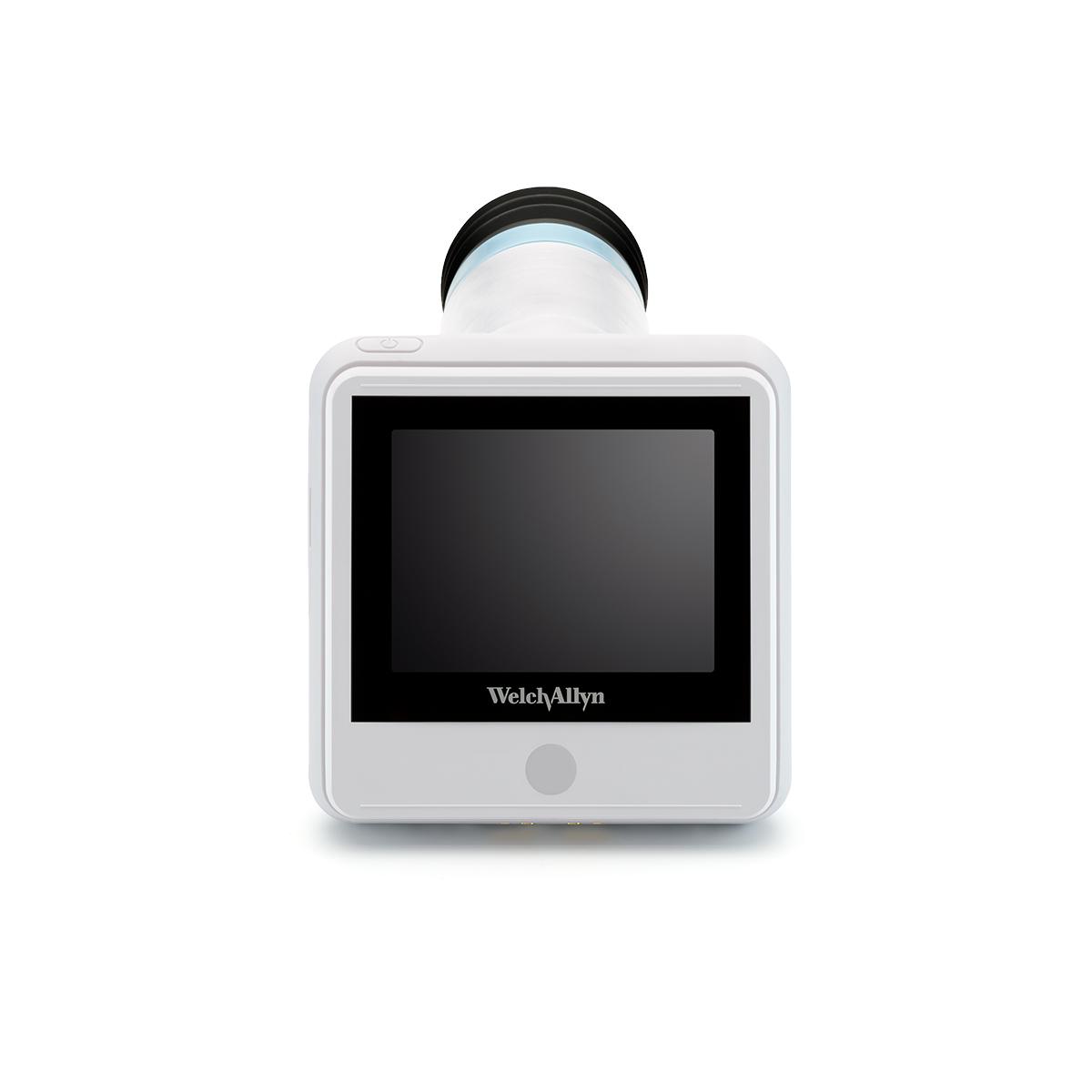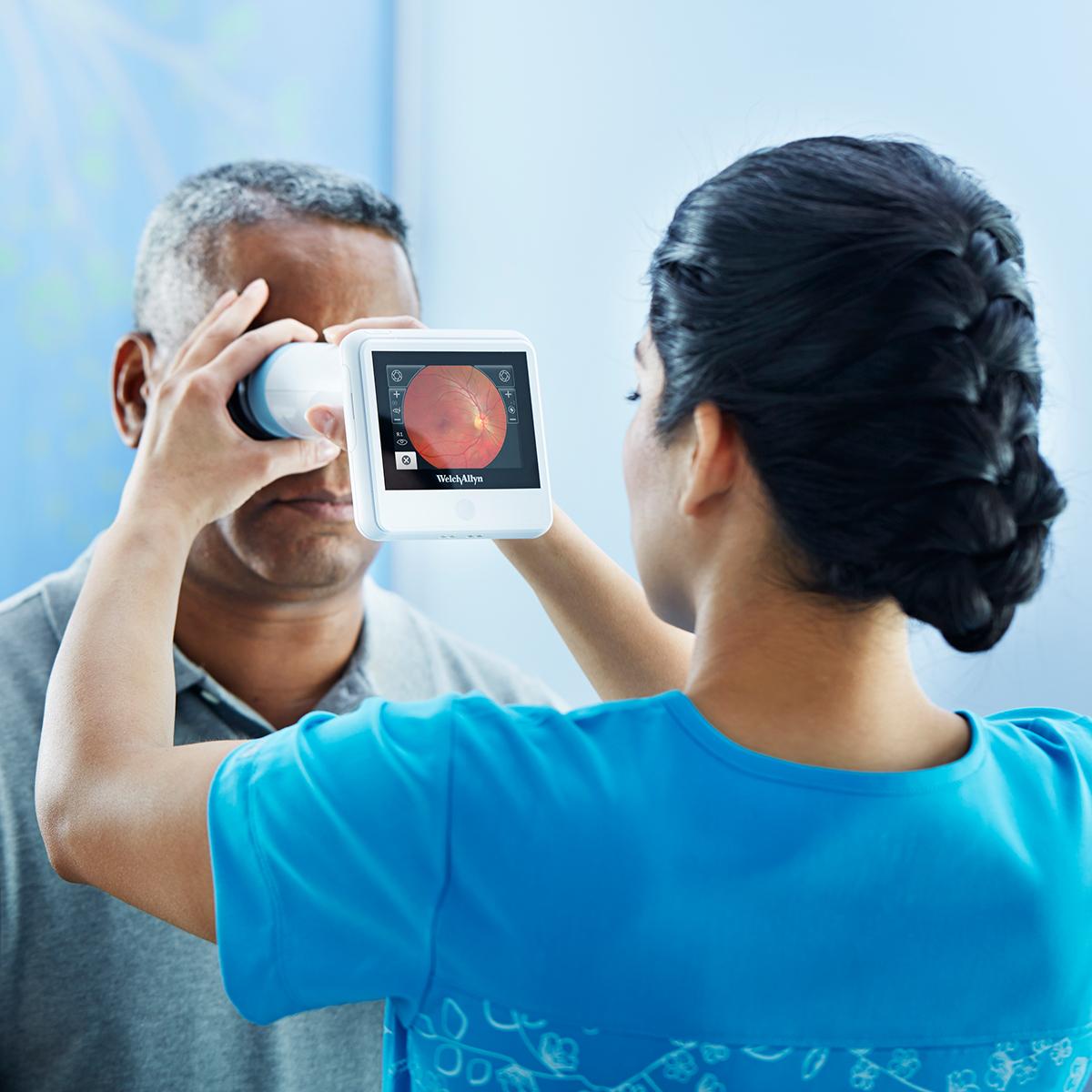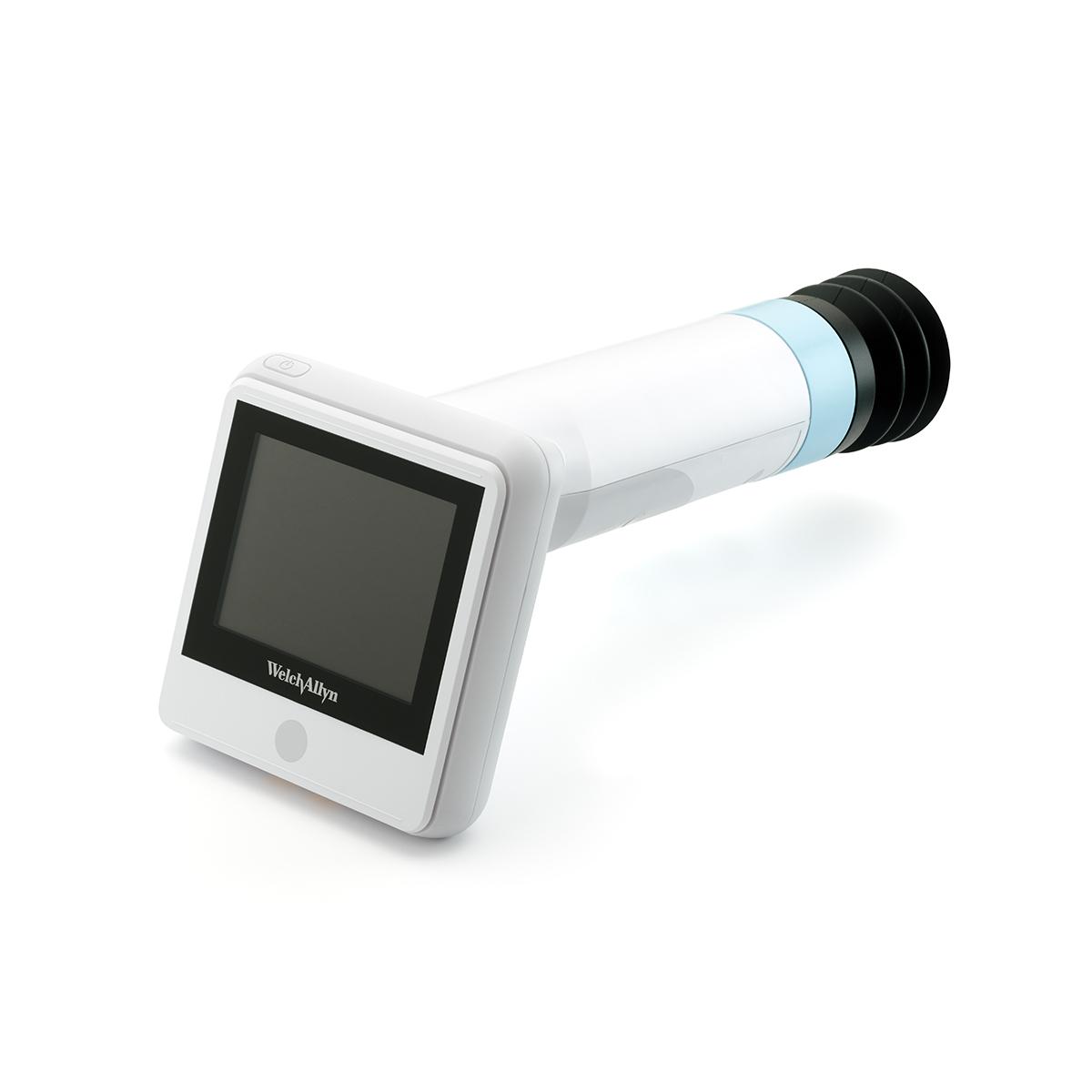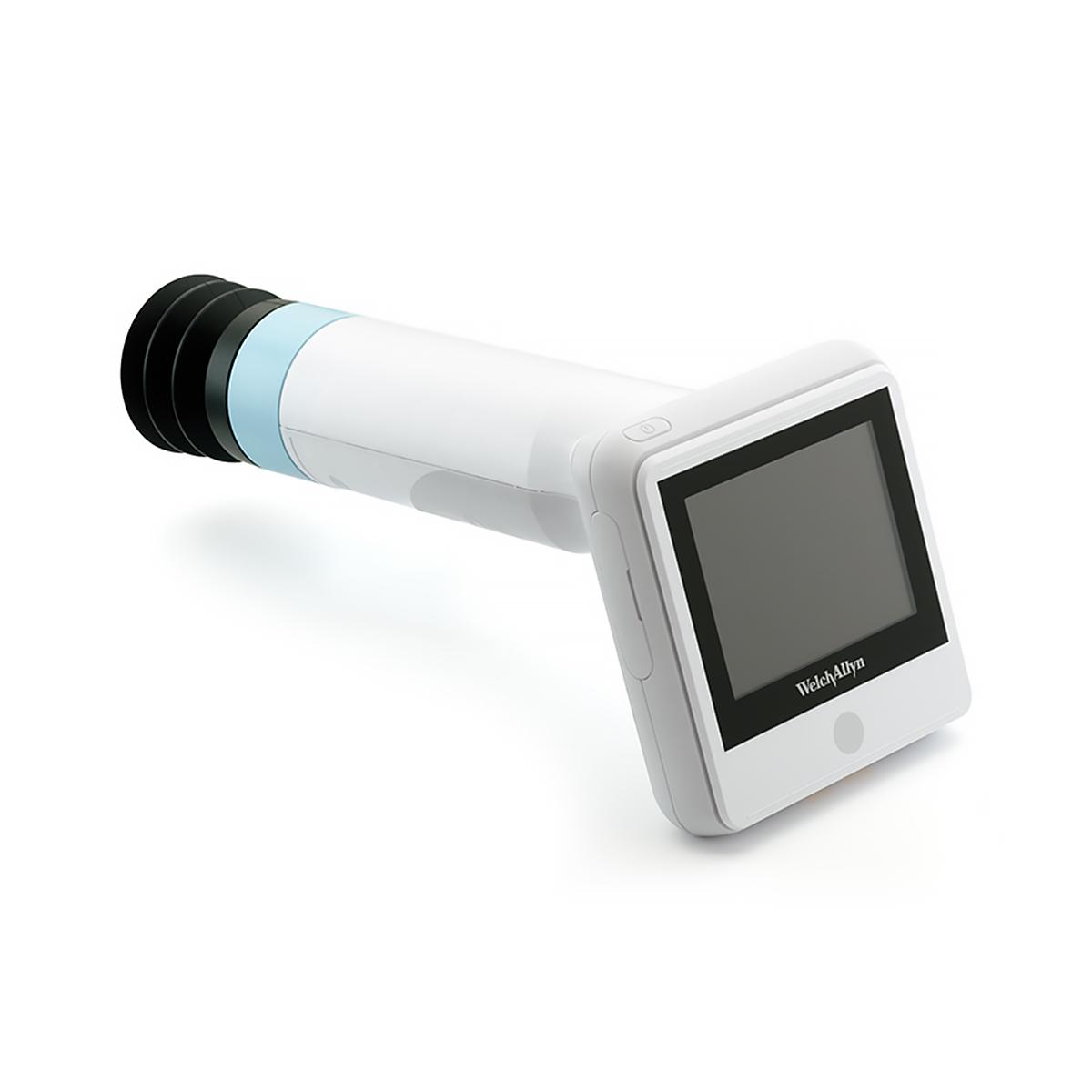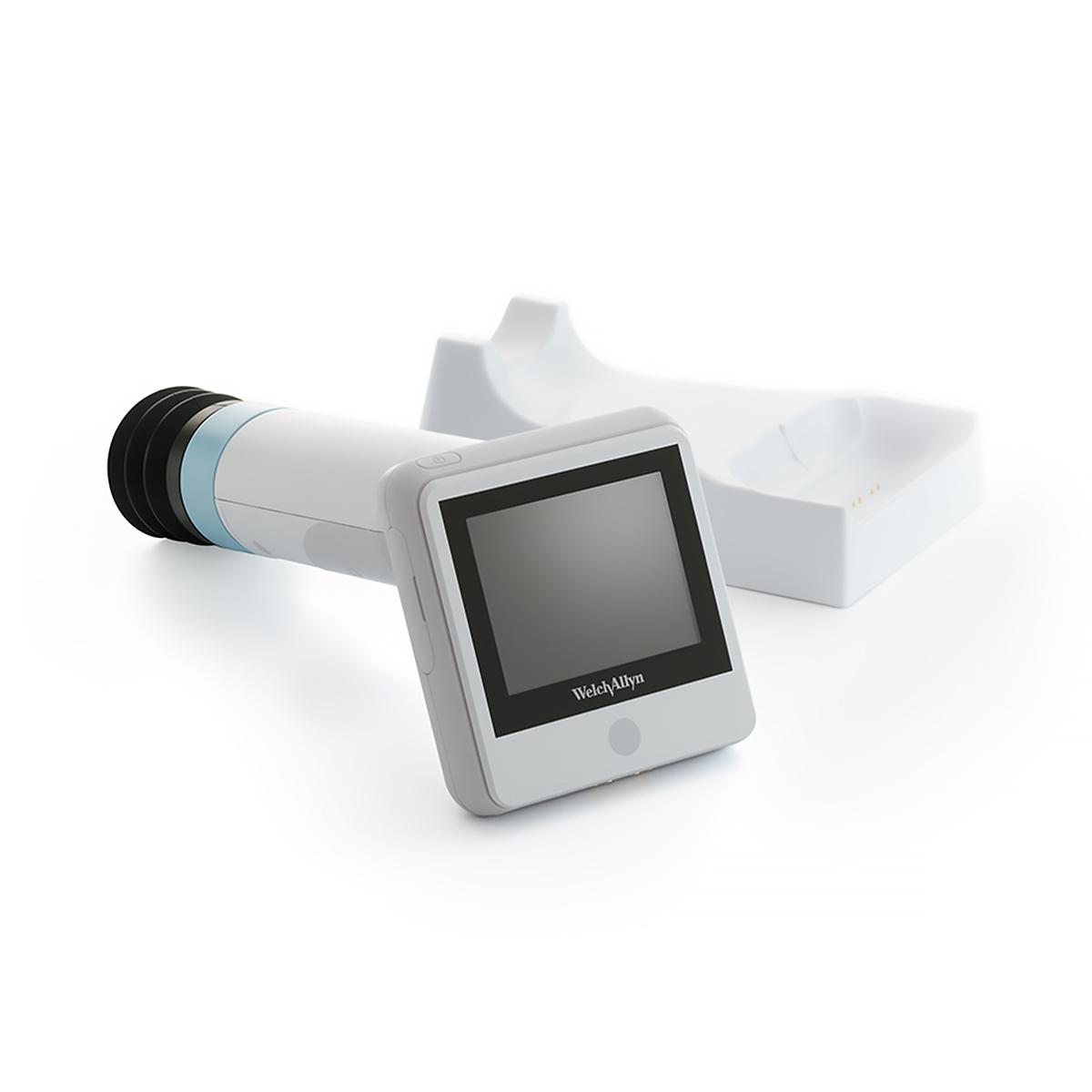Features
- More affordable than tabletop retinal cameras1
- Proprietary image-quality evaluation helps eliminate callbacks for re-imaging
- Meets ISO 10940 optical standard
- Touchless auto-focus and image capture
- Integrated wireless capabilities help it adapt to your workflow
- High-resolution (2048 x 1536 pixels) 45-degree field of view
- Non-mydriatic imaging to keep your patients comfortable

Easy to Use
Effective
Flexible
The portable solution for primary care.
Secure

Seamless Workflow
Place retinal exam orders and automatically access diagnostic reports from your EMR. We offer fully integrated, bi-directional interfaces with EMRs including Allscripts, athenahealth, Cerner, Epic, NextGen and many others to help you streamline procedures.
Education & Documentation
Learn how to get the most value out of your solution.
Product Documentation
-
Case Study
keyboard_arrow_downTelemedicine and Retinal Imaging for Improving Diabetic Retinopathy Evaluation, Case Study
-
Declaration of Conformity
keyboard_arrow_downRetinaVue Software Network; Declaration of Conformity
-
Specification Sheet
keyboard_arrow_downRetinaVue 100 Imager, Specification Sheet
-
User Manual
keyboard_arrow_downBest Practices RetinaVue Imager and Network Client
Frequently Asked Questions
Expand All-
What is the difference between the RETINAVUE 700 Imager and the 100 Imager?
keyboard_arrow_downBoth imagers are part of the RetinaVue care delivery model, making for simple, comfortable diabetic retinal exams in primary care. And while both imagers feature breakthrough technology with auto-focus and auto-capture, the RetinaVue 700 imager also features auto-alignment and can capture images of both eyes. Note that a recovery time of 30 seconds between each image of a patients retinas will be enabled on the RetinaVue 700 Imager by default. Pupil recovery time between image capture is an important aspect of retinal imaging and it is recommended that all customers enable this feature. Plus, the RetinaVue 700 imager raises the bar with a 60° field of view as opposed to the 45° field of the 100. The RetinaVue 700 imager also has an even smaller pupil capability at 2.5 mm (see Directions for Use), requiring little to no chemical dilation compared to the 3 mm of the RetinaVue 100 imager.
-
Is RETINAVUE Network software included with the RETINAVUE 100 Imager?
keyboard_arrow_downDesigned to work exclusively with the RetinaVue Network software, a monthly subscription is required and priced per camera. HIPAA-compliant and FDA-cleared, this software enables you to easily transmit encrypted retinal images to your preferred ophthalmic specialist and manage population health data on retinal exams by clinic and patient. Subscriptions include fully integrated, bi-directional interfaces with EMRs to streamline documentation.
-
Can our preferred, local eye specialist interpret the retinal images from our clinic?
keyboard_arrow_downYes, you can contract with your preferred eye specialist. Alternatively, state-licensed, board-certified ophthalmologists and retina specialists at RetinaVue, P.C., can interpret the retinal images and prepare a comprehensive diagnostic report and referral/care plan generally in one business day — complete with ICD codes, signature and license number. RetinaVue, P.C., is the first tele-ophthalmology provider to earn The Joint Commission’s Gold Seal of Approval by demonstrating continuous compliance with the Commission’s Ambulatory Care Accreditation Standards. Professional medical services provided by RetinaVue, P.C., are priced on a per-exam basis.
-
Does a RETINAVUE Imager retinal assessment replace an annual eye exam?
keyboard_arrow_downNo. This exam, reviewed by retinal specialists, only detects diseases that manifest in the area of the retina imaged by the retinal camera, such as diabetic retinopathy. The RetinaVue care delivery model is not meant to be used as a replacement for a comprehensive eye exam, but rather to improve compliance for diabetic patients who are non-compliant with an annual retinal eye exam to detect retinopathy.
-
Are RETINAVUE Imager retinal assessments reimbursed?
keyboard_arrow_downFour of the top five commercial health insurance plans reimburse exam costs when provided through the RetinaVue care delivery model. Average reimbursement is approximately $75 per exam.2 Check with your health plans to determine coverage and reimbursement levels or contact one of our specialists who can assist you in this process.
-
Should I connect the RETINAVUE100 Imager via USB cable or wireless?
keyboard_arrow_downThe RetinaVue 100 Imager includes built-in wireless capabilities for seamless EMR connectivity and web-based control without the need for PC software or cables. A wireless workflow is ideal for:
- Optimizing your current workflow with EMR connectivity
- Using one camera across multiple clinics
- Performing exams in multiple states or in mobile environments
-
How much training is required to become proficient with the RETINAVUE 100 Imager?
keyboard_arrow_downThe RetinaVue 100 Imager incorporates sophisticated technology to enhance ease of use, including touchless auto-focus, automatic image capture and proprietary image-quality evaluation. Baxter provides up to four hours of on-site training to ensure each clinic develops one or two personnel to expert-level proficiency.
-
Does the RETINAVUE Imager retinal assessment meet the HEDIS requirement for a diabetic eye exam?
keyboard_arrow_downAbsolutely. The National Committee for Quality Assurance, which administers the HEDIS measure for diabetic eye exams, has validated that a RetinaVue imager retinal exam satisfies the HEDIS measure.
-
How does the image quality compare to tabletop retinal cameras?
keyboard_arrow_downLike most tabletop retinal cameras, the RetinaVue 100 imager can capture high-resolution (2048 x 1536 pixels) images, has a wide 45° field of view. It also meets ISO 10940, the International Organization for Standardization optical standard that specifies requirements and test methods for fundus cameras.
-
Do patients need to be dilated for a RETINAVUE imager exam?
keyboard_arrow_downLittle to no chemical dilation is needed with the RetinaVue 100 imager. Older patients, those with cataracts, or patients using certain medications may require a mild dilating drop.
-
Is chemical dilation required to obtain a high-quality image?
keyboard_arrow_downIn most cases, chemical dilation is not required. However, a small percentage of patients (an estimated up to 15%) may require use of a mild dilating drop to temporarily increase pupil size. There are different concentrations of dilation drops, with the mildest concentration often being enough for this exam. The effect of mild dilation drops wears off relatively quickly. Once the drops are administered, the patient should remain in a darkened room for about ten minutes before the exam.

